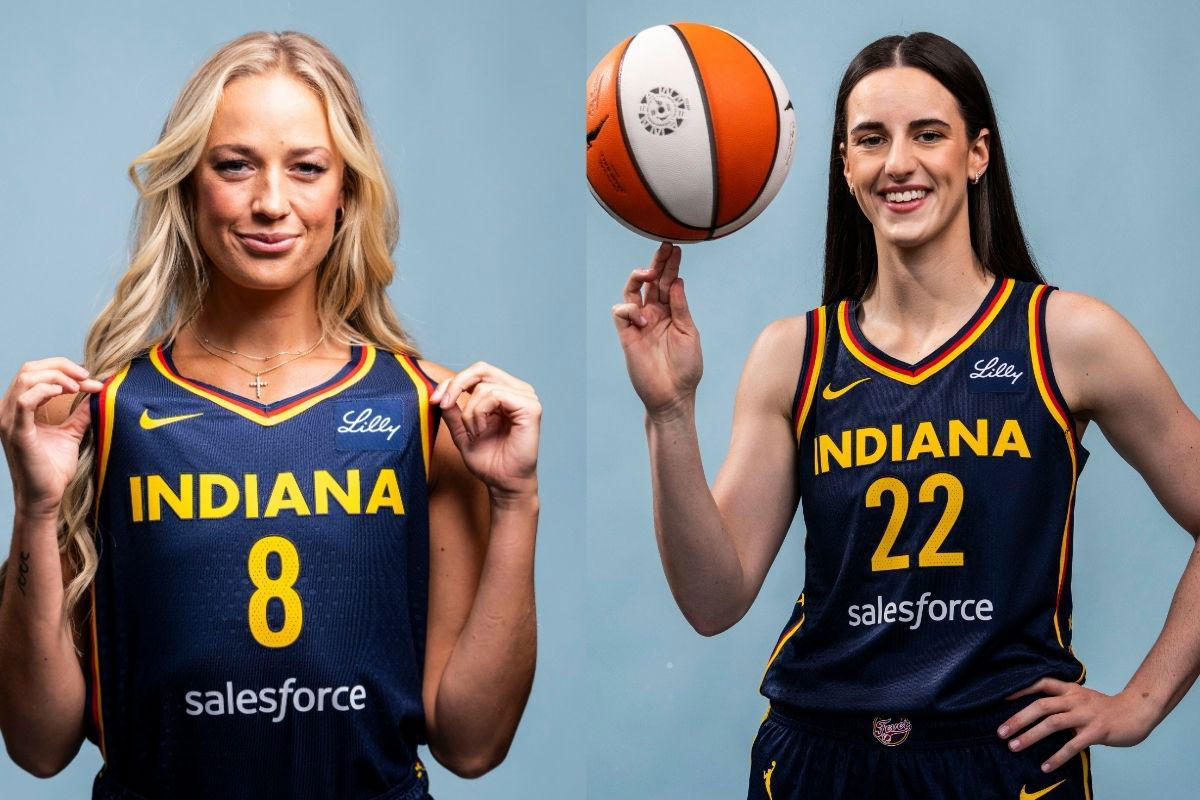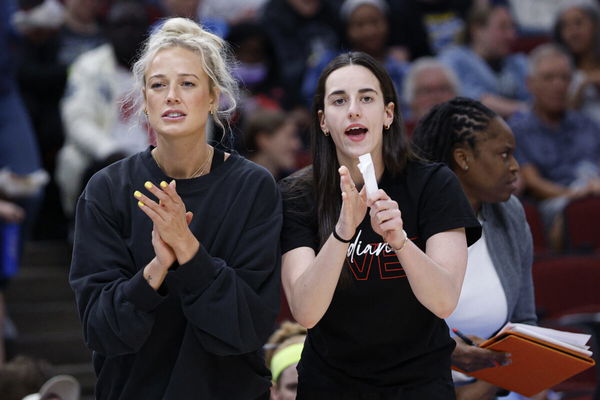
Imago
Credit – Imagn

Imago
Credit – Imagn
If the WNBA has seen a surge in recent years, much of it can be traced to Caitlin Clark’s arrival. This season, her presence alone, even on the sidelines, has helped the Indiana Fever lead the league in total attendance, drawing nearly 700,000 fans across home and away games. Last year, in Clark’s debut season, the Fever’s home attendance of 340,715 set a single-season record, surpassing New York’s 2001 mark of 250,565 in 16 games. Clark’s influence, however, isn’t limited to Indiana.
Watch What’s Trending Now!
The Las Vegas Aces made history on July 2, 2024, by hosting the Indiana Fever at T-Mobile Arena. The game drew an impressive 20,366 fans, marking the largest WNBA crowd in 25 years, and the 5th largest of all time! Yet when the Aces and Fever met again this postseason, veteran Sophie Cunningham noticed something different in Las Vegas that surprised her, given the big numbers of the past.
On her “Show Me Something” podcast, Sophie Cunningham offered a surprising take on that historic night. “I will say I thought that that place normally it’s like packed and sold out and loud, and like it really wasn’t (This time). Like, there was people there, but it was not how it had been in the past couple of years, which is like really interesting to me.” But that wasn’t all from Sophie as she shared one of her experiences with Clark.
ADVERTISEMENT
Sophie directly connected the large crowd to Clark, adding, “Last time we were actually up there, we played at T-Mobile. That’s when like everyone was playing and we pretty much sold that thing out. And I say we like I think they did that cuz the Fever were in town.” Yes, T-Mobile. And it adds more to the CC narrative because the Aces didn’t play that game in their usual Michelob Ultra Arena, which seats a maximum of 12,000 fans. The Mobile, one of the iconic stadiums, can house over 20000 people.

Imago
Jun 7, 2025; Chicago, Illinois, USA; Injured Indiana Fever guard Sophie Cunningham (8) and guard Caitlin Clark (22) react from the bench during the first half of a WNBA game against the Chicago Sky at United Center. Mandatory Credit: Kamil Krzaczynski-Imagn Images
Caitlin Clark has been a driving force behind the WNBA’s surge in attendance, helping the league draw 2,353,735 fans last season, its highest total in 22 years and a 48% increase over last year. Every team saw double-digit growth, with Indiana (+319%), Los Angeles (+69%), and New York (+64%) leading the way. Clark’s impact goes far beyond the Fever, raising the league’s profile, bringing in new fans, and proving she is a true game-changer for women’s basketball.
ADVERTISEMENT
As the story moves beyond the arena, the Fever’s TV and streaming figures show a connected but more complex picture of Clark’s impact and the league’s growth. The next section digs into the viewership numbers that challenged the idea that WNBA interest would dip without Clark on the floor and explains how Indiana’s ratings held up even amid injuries and roster changes.
ADVERTISEMENT
Viewership numbers hint at a similar story
The narrative that the WNBA would suffer without Caitlin Clark holds, but it has survived to some extent. Fever broadcasts kept strong ratings into the playoffs. Local reporting noted that the Fever Aces Game 1 semifinal averaged 1.4 million viewers on ABC, marking a high for semifinal play on Disney platforms and showing broad interest even when Clark was sidelined. Those figures suggest that team narratives and tight playoff matchups are pulling audiences beyond single-player draws, but there’s a catch.
Last year, the Fever playoff game in which Clark participated clashed with the NFL, similar to this year’s Round 1. But the difference? Last year it averaged 1.84 million viewers, or nearly double this year’s number. The Fever’s 2025 playoff opener drew 951,000 viewers on ABC, Game 2 against Atlanta averaged 1.5 million on ESPN, and Game 3 peaked near 1.8 million at times despite some fluctuations.
Top Stories
Sean McDermott Announces Bad News for Josh Allen as Bills QB Rings Alarm Bells

Baltimore Ravens Make Kevin Stefanski Announcement After Firing John Harbaugh for Lamar Jackson Fallout

PGA Tour Makes Feelings Clear as $14 Billion Sponsor Cuts All Ties After 17 Years

Novak Djokovic Faces Roadblock as He Won’t Be Able to Represent Serbia After Australian Open

Brooks Koepka Approaches PGA Tour With an Impossible Request After LIV Golf Departure

NFL Legend Terrell Owens, Terry Bradshaw’s Wife & More Share Messages After ICE Shooting Controversy

The TV numbers show the Fever can sustain attention and that the league’s non-Clark floor is higher than many expected. But what Clark brings to the table is totally different.
ADVERTISEMENT
Yes, leaguewide viewership also rose, with non-Fever games seeing a large uptick that points to broader WNBA momentum. Total WNBA game averages climbed to about 794,000 viewers, up 21 percent year over year, and non-Fever contests averaged around 549,000 viewers, up 37 percent. The data indicate that while Clark remains a major draw, expanding storylines, better scheduling, and new teams are boosting baseline interest and giving the league a stronger footing as it grows.
ADVERTISEMENT
ADVERTISEMENT
ADVERTISEMENT

